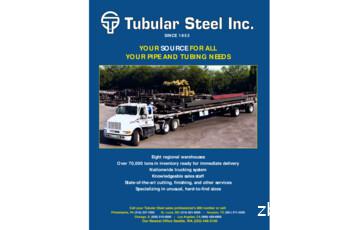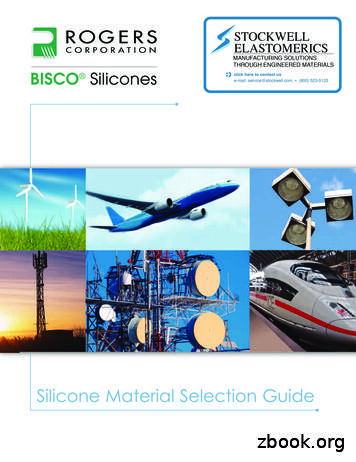ASTM D2240-Durometer Hardness
WC-82-04-01ASTM D2000 Standard Test MethodsProcess Owner: Engineering / QualityEffective Date: 7/20/2015 Rev. A Pg. 1 of 6Approved: 7/20/2015 12:55 PM - Jim TarsinosASTM D2240-Durometer HardnessDurometer Hardness Testing measures the hardness of rubber elastomers andplastic materials.The most widely used hardness measuring instrument is called the Durometer. Itmeasures hardness values in points-that range from 0 to 100.0 points represent a very soft material, while 100 points represent a very hardmaterial.Rubber elastomers are measured using the Shore Type-A scale.Test Procedure: Test specimens are placed on a hard flatsurface. The indentor of the durometer gauge ispressed into the specimen making sure that it isparallel to the specimen surface. The hardness value is read within onesecond of firm contact with the specimen.JET Rubber, Inc. uses an ASKER durometergauge that has a peak-load indicator to ensurethat value readings are recorded within onesecond.The gauge is installed on a 1000g constant-loadoperating stand. This arrangement keepsspecimens flat and parallel to prevent variancein measurement values.Test Parameters:Specimen Shape: Cylindrical DiskSpecimen Diameter: 1.14” 0.02”Specimen Thickness: 0.49” 0.02”Number of Specimens Tested: 3 to 5Conditioning and Testing Temperature: 73.4 3.6 FConditioning and Testing Relative Humidity: 50 5%
WC-82-04-01ASTM D2000 Standard Test MethodsRev. A Pg. 2 of 6ASTM D395 Compression SetCompression Set Testing determines the ability of an elastomericmaterial to maintain its elastic properties after exposure toprolonged compressive stress.ASTM D-395 describes two types of Compression set tests: Method A, compression set under constant load; and Method B, compression set at constant deflection of 25%.JET Rubber, performs Compression testing using method B.Test Procedure: The thickness of the original specimen ismeasured and recorded.The specimen in then placed between theplates of the compression set assembly.The specimen is compressed to 75% of itsoriginal height. Spacers are used to ensure thatthe compression force is accuratelymaintained.The loaded compression set assembly is placedin an oven at a specified temperature for thesuggested periods of 22 hours or 70 hours.The specimen is removed from the oven andconditioned for 30 minutes on a wooden plank.The final thickness of the specimen is thenmeasured.Compression set is expressed as a percentage of the original deflection and is calculated using thefollowing formula:CB Compression Setto Original thickness of the specimenti Final thickness of the specimentn Thickness of the space barsTypical Test Parameters:Specimen Shape: Cylindrical DiskSpecimen Diameter: 1.14” 0.02”Specimen Thickness: 0.49” 0.02”Number of Specimen Tested: 2 or 3Conditioning and Testing Temperature: 73.4 3.6 FConditioning and Testing Relative Humidity: 50 5%
WC-82-04-01ASTM D2000 Standard Test MethodsRev. A Pg. 3 of 6ASTM D412 TensionThis test method evaluates the tensileproperties of vulcanized thermoset rubbersand thermoplastic elastomers and describestwo types of Tension tests: Method A, using dumbbells andstraight section specimens; and Method B, using cut ring specimens.To determine tension properties such astensile strength, ultimate elongation, yieldpoint, yield strain and yield stress, JETRubber, Inc. uses an Instron 3365 testingmachine equipped with Blue Hill software.Test Procedure: Using a standard dumbbell specimencutting die, five specimens are cut from avulcanized sheet prepared to ASTM D3182and ASTM D3183 procedures. The dumbbells are conditioned for atleast 30 minutes prior to beginning the test. The thickness of the reduced (gaugelength) section of the dumbbells is measuredand recorded. The specimen is carefully placed betweenthe grips of the testing machine to provideuniform alignment. An extensometer is used to grip thespecimen at the reduced section of thedumbbell. The testing machine is activated and thegrips begin to separate at the rate of 20 2inches/minute. Thetestends once thespecimenbreaks.TypicalTest Parameters:Specimen Shape: DumbbellSpecimen Gauge Length: 1.31”Specimen Thickness: 0.08” 0.008”Number of Specimen Tested: 5Conditioning and Testing Temperature:73.4 3.6 FConditioning and Testing RelativeHumidity: 50 5%
WC-82-04-01ASTM D2000 Standard Test MethodsASTM D624 Tear StrengthThis test method measures the property resistance of vulcanized rubberand thermoplastic elastomers knownas ‘tear strength’.Tear strength is measured using theforce per unit thickness required torupture,initiate or propogate a tearthrough the specimen tested.To perform Tear Strength Testing,JET Rubber, Inc. uses an Instron3365 testing machine equipped withBlue Hill software. Test Procedure:Using a type ‘C’ specimen cutting die, five specimens are cut froma vulcanized sheet, prepared to ASTM D3182 and ASTM D3183procedures.The specimens are conditioned for at least 30 minutes prior totesting.The thickness of the specimen at the apex is measured andrecorded.The specimen is carefully placed between the grips of the testingmachine to provide uniform alignment.The testing machine is activated and the grips begin to separate atthe rate of 20 2 inches/minute.The test ends once the specimen breaks.Typical Test Parameters:Specimen Shape: Die “C” cut specimenNumber of Specimen Tested: 5Conditioning and Testing Temperature: 73.4 3.6 FConditioning and Testing Relative Humidity: 50 5%Rev. A Pg. 4 of 6
WC-82-04-01ASTM D2000 Standard Test MethodsRev. A Pg. 5 of 6ASTM D2084 Vulcanization Using Oscillating Disc Cure MeterThis test method describes the use of the ODR- oscillating disk cure meter.Jet Rubber, Inc. uses a Monsanto R-100 ODR, equipped with MonControlSoftware to measure the curing and processing characteristics ofvulcanizable rubber compounds.Test Procedure:A test specimen of vulcanizable rubbercompound is inserted into the ODR testcavity. After the ODR closes, it is containedin a sealed cavity under positive pressure. The cavity is heated to a specifiedtemperature. The rubber completely surrounds thebi-conical disk after the platens are closed The disk oscillates at small rotaryamplitude (1 /3 ) to exert a shear strain onthe test specimen. The test is completed when therecorded torque either rises to anequilibrium or maximum value, or when a predetermined time haselapsed.Typical Test Parameters:Number of Specimen Tested: 1-3Conditioning Temperature: 73.4 3.6 FConditioning and Testing Relative Humidity: 50 5%
WC-82-04-01ASTM D2000 Standard Test MethodsASTM D297 – DensityThis test method determines the density of a vulcanized specimen, knowas ‘Specific Gravity’. The standard includes the following methods: Pycnometer Method;Hydrostatic Method; andCompressed Volume Densimeter Method.JET Rubber, Inc. uses the Hydrostatic Method to determine the densityor ‘Specific Gravity ‘of vulcanized rubber.Test Procedure The mass of a specimen disc is measured.A beaker is filled with de-ionized water and placed in a universalspecific gravity kit as shown.A milligram balance is used to determine density. The mass of the specimen in air-Air (g) is measured. The mass of the specimen in water- Water (g) is measured.‘Specific Gravity ‘is calculated using the following formula:Test ParametersSpecimen Shape: Cylindrical DiskSpecimen Diameter: 1.14” 0.02”Specimen Thickness: 0.49” 0.02”Number of Specimen Tested: 1Conditioning and Testing Temperature: 76.1 F – 77.9 FRev. A Pg. 6 of 6
The test ends once the specimen breaks. Typical Test Parameters: Specimen Shape: Die “C” cut specimen Number of Specimen Tested: 5 Conditioning and Testing Temperature: 73.4 3.6 F Conditioning and Testing Relative Humidity: 50 5% WC-82-04-01 ASTM D2000 Standard Test Methods Rev. A Pg. 4 of 6
270ksi steel per astm a416, low relaxation nylon per astm d5989 grade 60 steel per astm a815 buna-n, per astm d2240, & d412 buna-n per astm d2240, & d412 stainless steel, type 316 adhesive lined polyolefin polypropylene per astm d4101 polypropylene per astm d4101 buna-n per astm d2240, & d412 buna-n, per astm d2240, &d412 polypropylene per astm .
ASTM C42 ASTM C293 ASTM C457 7066 SW 44th ST Miami, FL 33155 Contact: Andres Diaz Abdias H. Saenz, P.E. ASTM C215 Ph 305-668-5792 Fax 786-513-3754 ASTM C900 ASTM C4435 ASTM C597 ASTM C642 Jaime Reyes, P.E. ASTM C174 ASTM C215 ASTM D698 ASTM D2167 ASTM C1585 ASTM D4263 ASTM D4564 ASTM D4580 ASTM C1740 ASTM D4263 ASTM
astm a 966, 135, 136 astm d 1298, 139 astm d 1500, 139 astm d 2161, 141 astm e 1025, 63 astm e 1032, 59 astm e 11, 136, 137 astm e 1135, 102, 107 astm e 1316, 80 astm e 1416, 59 astm e 1417, 106–108, 114 astm e 1444, 131–138, 141, 142 astm e 1647, 69 astm e 165, 109, 115 astm e 1742, 59 astm e 709, 132 astm e
*astm a182 *astm a564 *astm a213 astm a778 *astm a249 asms-5613 *astm a269 asms-5639 *astm a276 asms-5640 *astm a312 asms-5647 . astm a512 cdbw & cdew astm a513 dom astm a519 cdsm sae j524/j525 hydraulic ams 5050 fluid line specification astm a135 astm a178 grd a astm a214 astm a500 grd b astm a513 type 1,2 awwa c200
Salt Spray testing: ASTM B117 Cyclic Corrosion Testing: ASTM G85 Conical Mandrel: ASTM D522 Specular Gloss: ASTM D523 Moisture absorption: ASTM D570 Coating Film thickness: ASTM D1196 Hardness: ASTM D2240 Color Measurement: ASTM D2244 Adhérence de la peinture: ASTM D3359 Scratch Resistance: ASTM D3363
JIS G3459, JIS G3463. GOST 9940, GOST 9941 Nickel Alloy Pipe Specification: ASTM B111, ASTM B161, ASTM B163, ASTM B165, ASTM B167, ASTM B338, ASTM B407, ASTM B423, ASTM B444, ASTM B619, ASTM B622, ASTM B626, ASTM B668, ASTM B677, ASTM B829 or Standards stipulated in the technical agreement. Add:No.3, Jiangnan Road, Jiangnan Industrial Park, Songyang, Zhejiang Province, China Cell: 86-159 .
ASTM D 1056 ASTM D 1056 ASTM D 412 ASTM D 412 ASTM E 162 ASTM E 662 SMP-800- C ASTM E 595 ASTM E 595 ASTM E 595 Rogers Internal ASTM D 746 ASTM D 150 ASTM D 149 ASTM D 495 ASTM D 257 ASTM C 518 Flame Resistance Flame Spread Index (Is) Smoke Density (Ds) Toxic Gas Emissions Rating Total Mass Loss Collected Volatile Condensible Materials (CVCM) Water
*Based on ASTM D2240-15, 0.4445 N/durometer. ISO 18898 indicates 0.4450 N/durometer. Alternatively any SHD Verifier value can be converted to a durometer reading using the following formulas: Shore A (F - 0.1236 lbs) / 0.0169 lbs Shore D* F /























